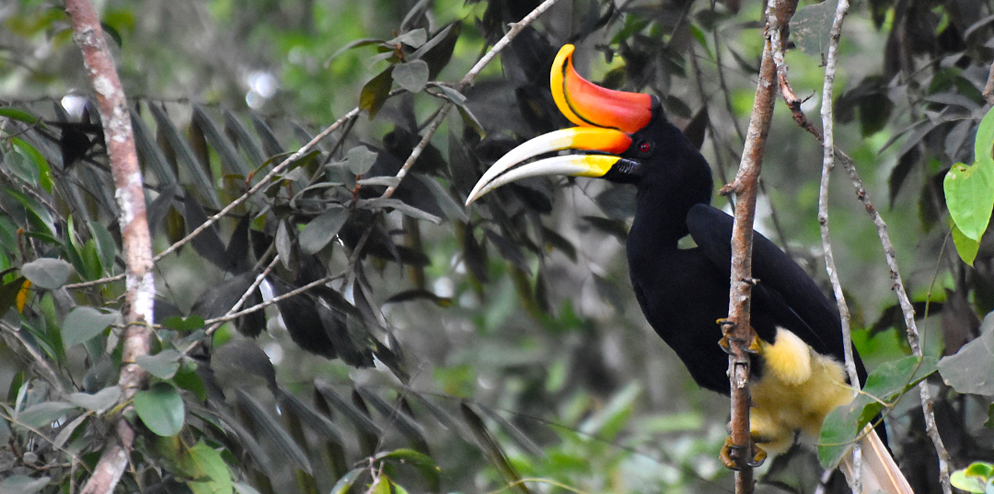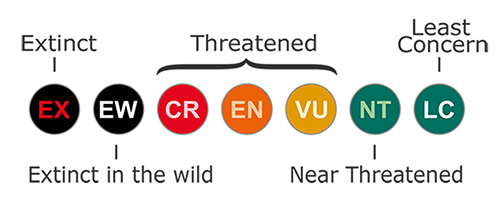April 06, 2018
Plants and animals are often identified as being Endangered or Vulnerable, but do you know what these terms actually mean?
The terminology refers to a species’ status as designated by the International Union for the Conservation of Nature’s (IUCN) Red List of Threatened Species, which catalogues the conservation status, trends, threats and relative risk of extinction of thousands of species around the world in order to inform and catalyze action for biodiversity conservation.
First issued in 1994, the Red List is the most comprehensive guide of its kind and plays an increasingly important role in guiding the conservation activities of governments, NGOs, scientific institutions and conservation programmes such as RER.

The IUCN Global Species Programme currently has data on more than 79,000 species and a target to achieve complete data on 160,000 species by 2020 from total of 1.9 million species on Earth that have been discovered and given scientific names. Currently, 64,000 species are well documented by the Red List which is constantly expanding and changing as new species are brought in and existing species undergo taxonomic revisions. The IUCN Red List is updated at least twice each year.
The IUCN categories describe endangered species and their risk of extinction (which is a chance process) and divide them into a number of categories. The assignment of a category requires detailed scientific assessment and peer-review. The categories are as follows:

Extinct (EX): No reasonable doubt that the last individual has died.
Extinct in the Wild (EW): The species survives only in captivity or as artificially supported populations far outside their historical geographic range.
Critically Endangered (CR): This species is at extremely high risk of extinction due to population decline of more than 80 percent over the previous 10 years (or three generations), a current population size of fewer than 50 individuals, or other factors.
Endangered (EN): A very high risk of extinction as a result of rapid population declines of 50 to more than 70 percent over the previous 10 years (or three generations), a current population size of fewer than 250 individuals, or other factors.
Vulnerable (VU): A very high risk of extinction as a result of rapid population declines of 30 to more than 50 percent over the previous 10 years (or three generations), a current population size of fewer than 1,000 individuals, or other factors.
Near Threatened (NT): This species is close to becoming threatened (Vulnerable, Endangered or Critically Endangered) in the near future.
Least Concern (LC): These species are considered to be abundant.
Data Deficient (DD): Cannot be evaluated because of insufficient information.
In RER, the list is useful to guide where to focus our wildlife conservation and restoration efforts, while also providing a common framework for us to work with scientists and experts around the world.
Although the forests in RER are considered by the Indonesian Ministry of Environment and Forestry to be degraded due to past human activities, hence the need for restoration, RER still provides valuable habitat for plants and animals considered to be Critically Endangered including two species of trees, the Sumatran Tiger, Sunda Pangolin, Painted Terrapin, and Helmeted Hornbill.
Endangered species thus far include three species of trees, the Flat Headed Cat, Agile Gibbon, White Winged-Duck, Storm’s Stork, and Bornean River-Turtle.
RER is also home to many animals considered Vulnerable, including three species of trees, the Sunda Clouded Leopard, Sunda Slow Loris, Lesser Adjutant, Malay Crestless Fireback, and Asian Leaf Turtle.
Of course even species that are not considered to be threatened deserve protection from habitat loss and poaching. The IUCN Red List provides a useful way to prioritize our efforts for assessment and focus conservation action plans.